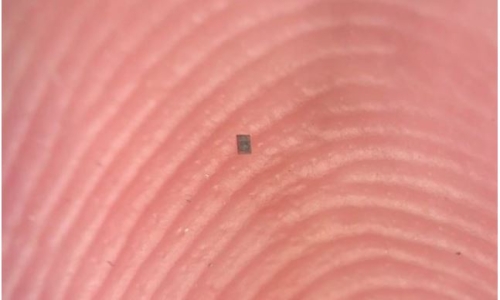


 6:6:9
6:6:9  2019-06-26
2019-06-26  1298
1298

New research reinforces the idea that the absence of certain bacteria in the gut can cause food allergy, a condition that affects millions of people. The study also suggests that replenishing key gut bacteria could offer a way to treat food allergy.
Scientists at Boston Children's Hospital and Brigham and Women's Hospital, also in Boston, MA, found that babies and children with food allergies are missing certain species of gut bacteria.
When the team gave the missing bacteria to mice, the microbes protected the animals from food allergies.
The researchers also mapped the mouse cell and bacteria interactions behind the protective effect.
They describe their findings in a recent Nature Medicine paper.
Previous studies have reached similar conclusions about the links between gut bacteria and food allergy. However, they did not conduct detailed analyses of the interactions at the cellular level.
"We identified culturable human-origin bacteria that modulate the immune system to become tolerant to food allergens," says co-senior study author Dr. Lynn Bry, director of the Massachusetts Host-Microbiome Center at Brigham and Women's Hospital.
The findings point to a new way to treat food allergy that uses beneficial bacteria to alter the wiring of the immune system. Rather than targeting any particular food allergen, this method could potentially treat all food allergies in one go.
Such an approach is very different than oral immunotherapy, in which the aim is to raise the threshold of allergic response through tiny, increasing exposures to the relevant food allergen.
"This represents a sea change in our approach to therapeutics for food allergies," Dr. Bry adds.
Food allergy and gut bacteria
An allergy arises when a person's immune system has an extreme reaction to a substance that does not typically provoke a response in other people.
The allergic response can range from mild irritation to anaphylaxis, a severe, life-threatening immune reaction that needs immediate medical attention. Food allergies are among those that can result in anaphylaxis.
A 2018 study on the global prevalence of food allergy suggests that in Western countries at least, the condition affects about 10% of people, being most common among younger children. There is also evidence that developing countries are seeing a rise in food allergy.
Allergies to cow's milk and eggs are among the most common food allergies in many parts of the world. However, patterns of food allergy can vary from country to country, depending on the dietary habits of their populations.
The human gut, or digestive tract, is home to trillions of microorganisms, including more than 1,000 species of bacteria. These microbes play crucial roles in health and disease.
Gut bacteria can influence the biology of their hosts in numerous ways. For example, they can interact with hormones to trigger inflammation. Researchers have also found links between gut bacteria imbalances and the workings of the nervous system and brain.
There is also solid evidence that gut microbes work in close partnership with the gut's immune system and form a "complex immune-functional organ" with its own subpopulations of immune cells, chemical messengers, and bacteria.
Any alteration in the balance between gut microbes and these immune system components can trigger a range of diseases, and it can even promote cancer and disrupt its treatment.
How may gut bacteria influence food allergy?
A theory that is gaining ground among scientists is that certain lifestyle and care patterns in the Western world could be reducing the opportunities for infants to accumulate beneficial gut bacteria that help wire the gut immune system in ways that prevent food allergy.
These lifestyle patterns include smaller families, a reduction in breastfeeding, an increase in cesarean deliveries, and higher use of antibiotics.
To test this idea, the team behind the new study began by collecting fecal samples every few months from babies. Using these samples, the researchers compared the gut bacteria of 56 infants and children who developed food allergies with those of 98 matched individuals who did not.
The results showed, as previous studies have also shown, that the gut bacteria of the individuals with food allergies were different from those of the participants without food allergies. However, this result then begs the question: To what extent did these differences account for the food allergies?
For the next phase of the study, the team transplanted gut microbe samples from children with and without food allergies into mice that were sensitive to eggs.
The researchers found that mice that received gut bacteria samples from children without food allergies were less likely to have allergic reactions to egg than mice that received samples from children with food allergies.
The researchers then used advanced computational techniques to identify differences between the gut bacteria samples from children with and without food allergies. Thanks to these powerful tools, the analysis could single out individual species of bacteria and test them in small groups.
From repeat testing of the bacteria in the mice, the team developed two groups of microbes, each comprising five or six Clostridiales or Bacteroidetes species of human gut bacteria.
These particular bacterial groups kept the mice resistant to egg allergy. When the team tested groups comprising other bacterial species on the mice, they did not protect them.
Mapping the cell-level interactions
In the next stage of the study, the researchers examined what might be happening at the cellular level to produce these effects. Again, thanks to the sophisticated techniques, they were able to look at changes in the immune interactions both in the humans and the mice.
They found that the beneficial Clostridiales and Bacteroidetes groups that protected the mice from food allergies targeted two immune pathways and triggered specific T cells in the immune system.
The T cells that the beneficial bacteria triggered were regulatory T cells. The bacteria had altered their state so that they did not provoke extreme immune reactions to chicken egg protein.
The researchers caution that while these results appear to show great promise, they are only valid in mice. Further studies now need to replicate the findings in humans.
Some members of the team are already setting up a trial at Boston Children's Hospital to test a fecal transplant approach to treating adults with peanut allergy.
In addition, a number of private companies are producing different bacteria compositions for clinical trials. At this pace, it is feasible that treatments could be available in approximately 5 years.
It appears that having the ability to drill down to detailed interactions between microbes and human cells opens up the possibility of "finding a better therapeutic and a better diagnostic approach to disease," comments Dr. Bry.
"With food allergies, this has given us a credible therapeutic that we can now take forward for patient care." Dr. Lynn Bry
Reality Of Islam |
|

A tiny robo

By applying

Stanford, C

A new study
 9:3:43
9:3:43
 2018-11-05
2018-11-05
10 benefits of Marriage in Islam
 7:5:22
7:5:22
 2019-04-08
2019-04-08
benefits of reciting surat yunus, hud &
 9:45:7
9:45:7
 2018-12-24
2018-12-24
advantages & disadvantages of divorce
 11:35:12
11:35:12
 2018-06-10
2018-06-10
 6:0:51
6:0:51
 2018-10-16
2018-10-16
 2:33:4
2:33:4
 2023-02-15
2023-02-15
 7:26:19
7:26:19
 2022-04-08
2022-04-08
 8:21:9
8:21:9
 2018-06-21
2018-06-21
 8:30:23
8:30:23
 2022-03-03
2022-03-03
 11:2:27
11:2:27
 2022-10-06
2022-10-06
 12:10:56
12:10:56
 2022-11-17
2022-11-17
 9:30:2
9:30:2
 2021-11-12
2021-11-12
 5:41:46
5:41:46
 2023-03-18
2023-03-18
| LATEST |